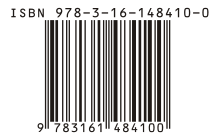
A markuplanguage is a text-encoding system which specifies the structure and formatting of a document and potentially the relationships among its parts. Markup can control the display of a document or enrich its content to facilitate automated processing.

In computing, plain text is a loose term for data that represent only characters of readable material but not its graphical representation nor other objects. It may also include a limited number of "whitespace" characters that affect simple arrangement of text, such as spaces, line breaks, or tabulation characters. Plain text is different from formatted text, where style information is included; from structured text, where structural parts of the document such as paragraphs, sections, and the like are identified; and from binary files in which some portions must be interpreted as binary objects.

The Standard Generalized Markup Language is a standard for defining generalized markup languages for documents. ISO 8879 Annex A.1 states that generalized markup is "based on two postulates":

The Semantic Web, sometimes known as Web 3.0, is an extension of the World Wide Web through standards set by the World Wide Web Consortium (W3C). The goal of the Semantic Web is to make Internet data machine-readable.

Extensible Markup Language (XML) is a markup language and file format for storing, transmitting, and reconstructing arbitrary data. It defines a set of rules for encoding documents in a format that is both human-readable and machine-readable. The World Wide Web Consortium's XML 1.0 Specification of 1998 and several other related specifications—all of them free open standards—define XML.

In computing, a human-readable medium or human-readable format is any encoding of data or information that can be naturally read by humans, resulting in human-readable data. It is often encoded as ASCII or Unicode text, rather than as binary data.
A document file format is a text or binary file format for storing documents on a storage media, especially for use by computers. There currently exist a multitude of incompatible document file formats.
MARC is a standard set of digital formats for the machine-readable description of items catalogued by libraries, such as books, DVDs, and digital resources. Computerized library catalogs and library management software need to structure their catalog records as per an industry-wide standard, which is MARC, so that bibliographic information can be shared freely between computers. The structure of bibliographic records almost universally follows the MARC standard. Other standards work in conjunction with MARC, for example, Anglo-American Cataloguing Rules (AACR)/Resource Description and Access (RDA) provide guidelines on formulating bibliographic data into the MARC record structure, while the International Standard Bibliographic Description (ISBD) provides guidelines for displaying MARC records in a standard, human-readable form.

In computer science, data is any sequence of one or more symbols; datum is a single symbol of data. Data requires interpretation to become information. Digital data is data that is represented using the binary number system of ones (1) and zeros (0), instead of analog representation. In modern (post-1960) computer systems, all data is digital.
A machine-readable passport (MRP) is a machine-readable travel document (MRTD) with the data on the identity page encoded in optical character recognition format. Many countries began to issue machine-readable travel documents in the 1980s. Most travel passports worldwide are MRPs. The International Civil Aviation Organization (ICAO) requires all ICAO member states to only issue MRPs as of April 1, 2010, and all non-MRP passports must expire by November 24, 2015.
Extensible Forms Description Language (XFDL) is a high-level computer language that facilitates defining a form as a single, stand-alone object using elements and attributes from the Extensible Markup Language (XML). Technically, it is a class of XML originally specified in a World Wide Web Consortium (W3C) Note. See Specifications below for links to the current versions of XFDL. XFDL It offers precise control over form layout, permitting replacement of existing business/government forms with electronic documents in a human-readable, open standard.
Data exchange is the process of taking data structured under a source schema and transforming it into a target schema, so that the target data is an accurate representation of the source data. Data exchange allows data to be shared between different computer programs.
Machine-readable dictionary (MRD) is a dictionary stored as machine-readable data instead of being printed on paper. It is an electronic dictionary and lexical database.
Language resource management – Lexical markup framework, produced by ISO/TC 37, is the ISO standard for natural language processing (NLP) and machine-readable dictionary (MRD) lexicons. The scope is standardization of principles and methods relating to language resources in the contexts of multilingual communication.
In digital lexicography, natural language processing, and digital humanities, a lexical resource is a language resource consisting of data regarding the lexemes of the lexicon of one or more languages e.g., in the form of a database.
A structured document is an electronic document where some method of markup is used to identify the whole and parts of the document as having various meanings beyond their formatting. For example, a structured document might identify a certain portion as a "chapter title" rather than as "Helvetica bold 24" or "indented Courier". Such portions in general are commonly called "components" or "elements" of a document.
In markup languages and the digital humanities, overlap occurs when a document has two or more structures that interact in a non-hierarchical manner. A document with overlapping markup cannot be represented as a tree. This is also known as concurrent markup. Overlap happens, for instance, in poetry, where there may be a metrical structure of feet and lines; a linguistic structure of sentences and quotations; and a physical structure of volumes and pages and editorial annotations.
A machine-readable document is a document whose content can be readily processed by computers. Such documents are distinguished from more general machine-readable data by virtue of having further structure to provide the necessary context to support the business processes for which they are created.







